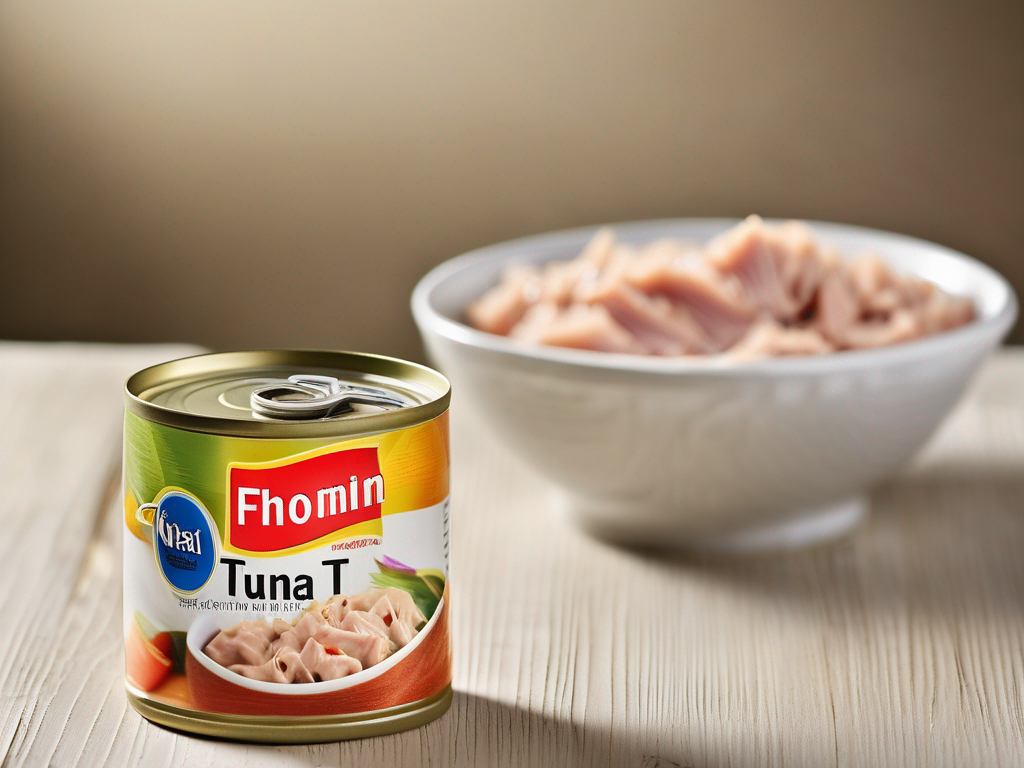
How to Properly Store Canned Tuna for Long Term Freshness
Get Your Free Food Safety Cheat Sheet
30 most common foods with instant answers. Print it and stick it on your fridge—completely free!
How to Properly Store Canned Tuna for Long Term Freshness
Canned tuna is a versatile and convenient pantry staple that can be used in a variety of dishes, from salads to sandwiches to casseroles. To ensure that your canned tuna stays fresh and safe for consumption, proper storage is key. In this blog post, we will explore the best practices for storing canned tuna for long term freshness. (Canned tuna)
Importance of Proper Storage for Canned Tuna
Canned tuna is a perishable food item that can spoil if not stored correctly. Proper storage not only helps maintain the quality and flavor of the tuna but also prevents the growth of harmful bacteria that can cause foodborne illnesses. By following the guidelines below, you can ensure that your canned tuna remains safe to eat for an extended period.
Ideal Storage Conditions for Canned Tuna
When it comes to storing canned tuna, the following factors play a crucial role in maintaining its freshness:
-
Temperature: Canned tuna should be stored at a consistent temperature between 40°F and 70°F (4°C and 21°C). Avoid exposing canned tuna to extreme temperatures or direct sunlight, as this can affect its quality.
-
Humidity: Keep canned tuna in a cool, dry place with moderate humidity levels. Excess moisture can lead to rusting of the cans, compromising the integrity of the product.
-
Light: Store canned tuna in a dark environment to prevent light exposure, which can cause the tuna to deteriorate more quickly.
-
Ventilation: Ensure proper ventilation in the storage area to prevent the accumulation of odors that can affect the taste of the tuna.
Tips for Storing Canned Tuna
To maximize the shelf life of your canned tuna and maintain its quality, consider the following storage tips:
1. Choose the Right Storage Location
- Store canned tuna in a pantry or cupboard away from heat sources such as the stove or oven.
- Avoid storing canned tuna near strong-smelling foods, as it can absorb odors.
2. Check the Expiry Date
- Always check the expiration date on the can before purchasing and consuming canned tuna.
- Use older cans of tuna first to ensure freshness.
3. Keep Cans Intact
- Inspect cans for any signs of damage, such as dents, bulging, or rust. Do not consume canned tuna from damaged cans, as it may be contaminated.
4. Use Proper Sealing
- If you open a can of tuna but don't use the entire contents, transfer the leftovers to an airtight container and refrigerate promptly.
5. Rotation System
- Implement a "first in, first out" system to ensure that older cans of tuna are used before newer ones to prevent spoilage.
Conclusion
Proper storage is essential for maintaining the freshness and safety of canned tuna. By following the tips outlined in this blog post, you can ensure that your canned tuna stays delicious and safe to eat for an extended period. Remember to store canned tuna in a cool, dark, and dry place, check expiration dates, and inspect cans for damage before consumption. With the right storage practices, you can enjoy the convenience and versatility of canned tuna in your favorite dishes without compromising on quality. (Canned tuna)
Authoritative Food Safety References
These agencies and university labs inform every tip and health precaution we publish.
USDA FoodKeeper – Cold Storage Guidelines
Official refrigerator, freezer, and pantry timelines maintained by the U.S. Department of Agriculture.
Visit USDA FoodKeeperFDA Produce Safety Rule & Grower Guidance
Field-to-fridge handling practices that prevent contamination of fruits, vegetables, and leafy greens.
Visit FDA Produce SafetyCDC Foodborne Illness Prevention Hub
Surveillance-backed guidance on pathogens, symptoms, and steps to reduce foodborne illness risk.
Visit CDC Food SafetyUC Davis Postharvest Technology Center
University research detailing optimal storage atmospheres for produce after harvest.
Visit UC Davis PostharvestPenn State Extension – Home Food Preservation & Safety
Peer-reviewed extension bulletins on safe canning, chilling, and reheating practices.
Visit Penn State ExtensionGet Your Free Food Safety Cheat Sheet
30 most common foods with instant answers. Print it and stick it on your fridge—completely free! Want more? Upgrade to the complete guide with 70+ foods.
Scan your food directly and get instant safety info using our AI-powered camera feature.